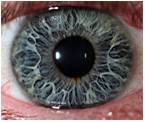Undergraduate Research Opportunities
Information on funded SMU Undergraduate Research Program opportunities can be found on the Office of Engaged Learning website.
Additionally, each faculty research group may have unfunded opportunities throughout the year. If you are interested in the research being conducted, we strongly encourage you to contact ECE faculty for more information.
Summer Undergraduate Research Fellowship (SURF) Program
The Lyle Summer Undergraduate Research Fellowship Program, or Lyle SURF, exposes students to cutting-edge scientific research conducted by Lyle and SMU faculty. This opportunity is most valuable to students who wish to participate in research with faculty with the intent to apply to graduate school or who are curious about engineering research relevant to technological advancement.
Role of Eye Motion in Depth Perception
 This research involves measuring human visual depth perception under varying types of eye motion. The experiments use the high precision eye tracking system and image stabilizer shown at the left.
This research involves measuring human visual depth perception under varying types of eye motion. The experiments use the high precision eye tracking system and image stabilizer shown at the left.
VLSI Circuits and Board Design
 The students will join a research group, working on circuits and board design, simulation and layout using industry-leading design software and tools. The students will also be working on the test of the circuits and systems, using the state-of-the-art test equipment in the lab. The goal is to let the students gain hands-on experience on circuits and system design and test for real-world applications.
The students will join a research group, working on circuits and board design, simulation and layout using industry-leading design software and tools. The students will also be working on the test of the circuits and systems, using the state-of-the-art test equipment in the lab. The goal is to let the students gain hands-on experience on circuits and system design and test for real-world applications.
Semiconductor Laser Design and FabricationSemiconductor Laser Design and Fabrication
 This project is developing advanced semiconductor lasers for telecommunications, defense and consumer applications. These devices contain gratings that stabilize the wavelength and permit surface emission. Holographic lithography is used at SMU to fabricate gratings with periods in the range of 0.2 to 0.5 microns for semiconductor lasers and other photonic components.
This project is developing advanced semiconductor lasers for telecommunications, defense and consumer applications. These devices contain gratings that stabilize the wavelength and permit surface emission. Holographic lithography is used at SMU to fabricate gratings with periods in the range of 0.2 to 0.5 microns for semiconductor lasers and other photonic components.
Context-Aware Wireless Networks
 Today's wireless devices have advanced sensing capabilities that allow contextual knowledge such as location, speed, environmental type, and topology. However, state-of-the-art wireless networks have yet to exploit context information. Our objective is to design, implement, and analyze algorithms in the field that couple context-awareness with cognitive information about the activity of surrounding transmitters to vastly improve network performance.
Today's wireless devices have advanced sensing capabilities that allow contextual knowledge such as location, speed, environmental type, and topology. However, state-of-the-art wireless networks have yet to exploit context information. Our objective is to design, implement, and analyze algorithms in the field that couple context-awareness with cognitive information about the activity of surrounding transmitters to vastly improve network performance. Advanced Digital Camera Development
 Digital cameras are undergoing a revolution. Combining signal processing with adaptive algorithms and novel optical design we are creating cameras which can do things never before possible. This research group is developing high performance, small, lightweight cameras for military applications. This work involves optical design and analysis, image processing, simulations and modeling.
Digital cameras are undergoing a revolution. Combining signal processing with adaptive algorithms and novel optical design we are creating cameras which can do things never before possible. This research group is developing high performance, small, lightweight cameras for military applications. This work involves optical design and analysis, image processing, simulations and modeling. Biometrics Research
 A biometric is a physical or behavioral characteristic that can be used to identify a person. Our biometrics research program is focused primarily on iris recognition. We are developing new computer algorithms for iris recognition, and evaluating these for performance and speed. We are also porting the algorithms to microprocessor systems. An undergraduate student would be able to assist in this research, and would also be able to help us develop a summer program in forensics that is being designed for high school/middle school students.
A biometric is a physical or behavioral characteristic that can be used to identify a person. Our biometrics research program is focused primarily on iris recognition. We are developing new computer algorithms for iris recognition, and evaluating these for performance and speed. We are also porting the algorithms to microprocessor systems. An undergraduate student would be able to assist in this research, and would also be able to help us develop a summer program in forensics that is being designed for high school/middle school students. Integrated Circuits and Systems
 The students will be working with the Analog/Radio-Frequency Integrated Circuits research group in the EE department, designing circuits and systems for a variety of exciting applications including biomedical devices/instruments, high-speed chip-to-chip and backplane communications, RF and wireless communications, and highly reliable circuits/systems for harsh environment such as space and high-energy particle collider. We are designing, simulating and testing circuits/systems using the industry-leading design software/tools and state-of-the-art equipment. Through these projects, students will gain hands-on experience on circuits and systems for real-world applications.
The students will be working with the Analog/Radio-Frequency Integrated Circuits research group in the EE department, designing circuits and systems for a variety of exciting applications including biomedical devices/instruments, high-speed chip-to-chip and backplane communications, RF and wireless communications, and highly reliable circuits/systems for harsh environment such as space and high-energy particle collider. We are designing, simulating and testing circuits/systems using the industry-leading design software/tools and state-of-the-art equipment. Through these projects, students will gain hands-on experience on circuits and systems for real-world applications. Reduction of Harmful Radiation from Cellular Phones
 Recently there has been a controversy over whether or not the radiation from cell phones increases the incidence of brain tumors. A variety of sources have continued to generate and reflect public concern regarding the potential and perceived risk from radiation emitted by wireless phone handsets. There is a clear indication of penetration of the radiation into the brain tissue because the operating frequency of a cell phone is relatively low. One way to lower the damaging exposure of electromagnetic fields to the user’s brain tissue without sacrificing the performance of a cellular phone is to reduce the near fields in the direction of the user’s head by placing a conductor. The near-field chamber at the UTD-SMU Antenna Characterization Lab is available to measure the field strengths near the cellular phone for various configurations.
Recently there has been a controversy over whether or not the radiation from cell phones increases the incidence of brain tumors. A variety of sources have continued to generate and reflect public concern regarding the potential and perceived risk from radiation emitted by wireless phone handsets. There is a clear indication of penetration of the radiation into the brain tissue because the operating frequency of a cell phone is relatively low. One way to lower the damaging exposure of electromagnetic fields to the user’s brain tissue without sacrificing the performance of a cellular phone is to reduce the near fields in the direction of the user’s head by placing a conductor. The near-field chamber at the UTD-SMU Antenna Characterization Lab is available to measure the field strengths near the cellular phone for various configurations.